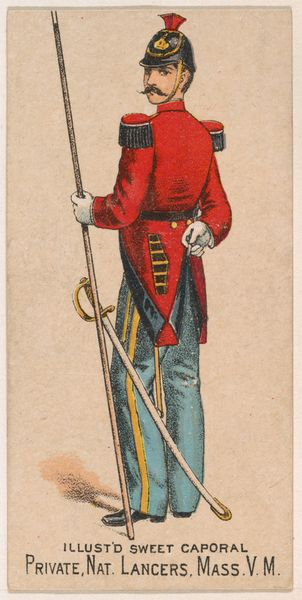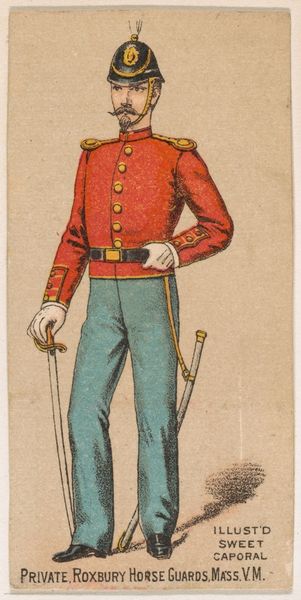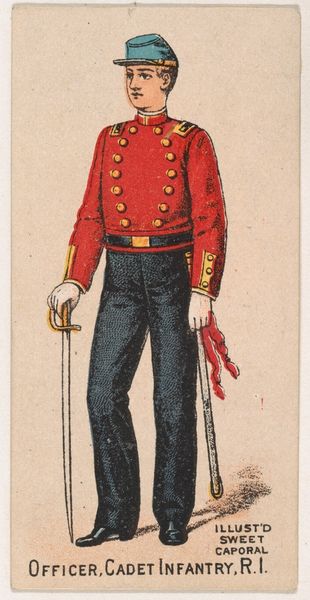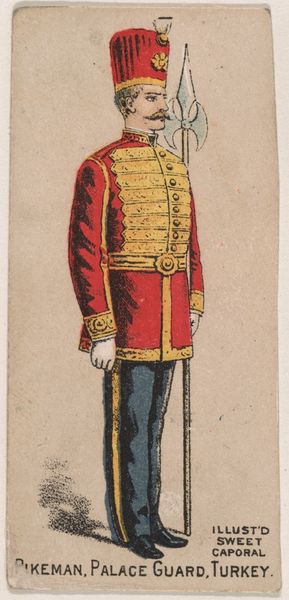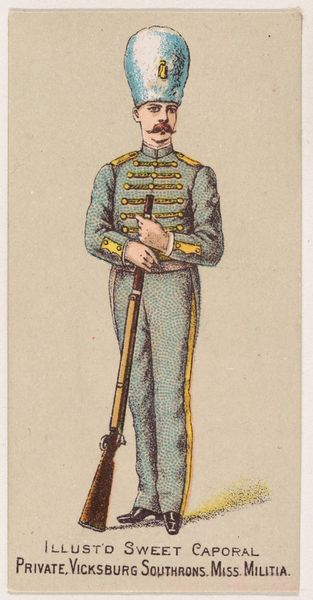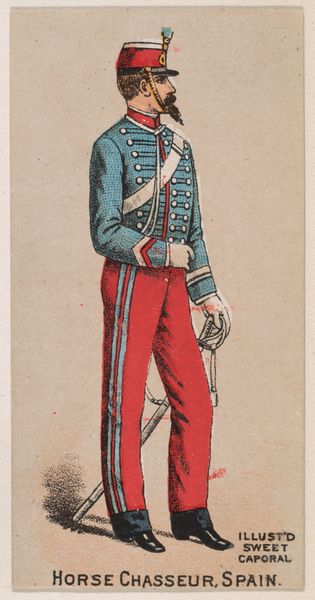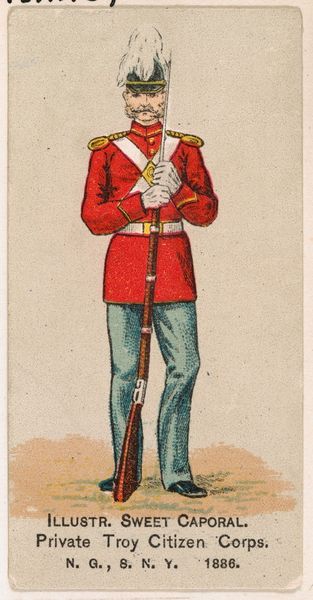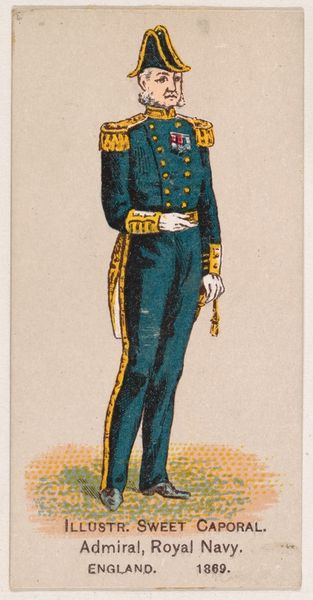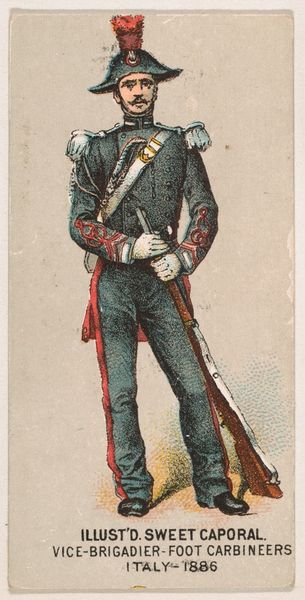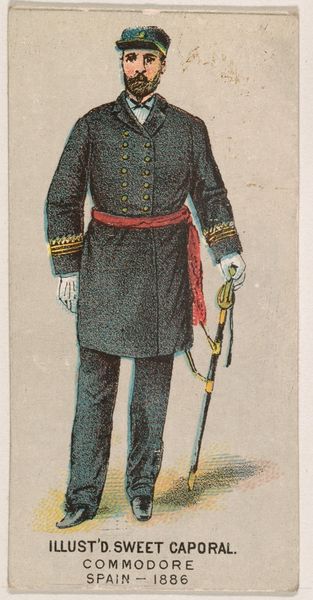
Private, Boston L. Dragons, Massachusetts, V.M., from the Military Series (N224) issued by Kinney Tobacco Company to promote Sweet Caporal Cigarettes 1888
0:00
0:00
drawing, print
#
portrait
#
drawing
# print
#
caricature
#
soldier
#
men
#
history-painting
Dimensions: Sheet: 2 3/4 × 1 1/2 in. (7 × 3.8 cm)
Copyright: Public Domain
Editor: So, this is "Private, Boston L. Dragons, Massachusetts, V.M." a print from 1888 by Kinney Brothers Tobacco Company. It’s one of the cards they included in packs of Sweet Caporal cigarettes. It's really striking - the bright red coat against the teal pants... it's so bold. What symbols or stories do you think this image is trying to tell? Curator: An excellent question. Consider first the cigarette card format itself – a small, portable object, widely disseminated. What does this say about the makers, and their view of the imagery on display? How might the artist balance historical precedent, in rendering such regalia, with contemporary design of consumer goods? Editor: That's interesting...I hadn't considered how being a cigarette card affected its creation. Curator: Precisely. These are images circulating within a specific culture, carrying visual cues related to masculinity, patriotism, and even the burgeoning consumer culture of the late 19th century. How does this particular soldier strike you? The figure exudes self-assurance, standing rigidly to show off a military posture, while the clothing also expresses identity, authority, and rank. Editor: Yes, the uniform makes it clear he’s supposed to represent someone powerful. Curator: Indeed. The uniform isn't merely functional, is it? The design and coloring serves to establish a very clear cultural connection to honor, courage, and a specific lineage within Boston’s military history. A lineage reinforced through consistent visual representation and memory. What stories does this conjure, even for viewers today? Editor: I see how these cards aren't just random drawings. They are part of a visual language, using symbols to sell an idea of what it means to be a man, what it means to be patriotic. Curator: Exactly. The power of the image is rooted in those layered, loaded symbols. Images help form our perception of reality and of our culture.
Comments
No comments
Be the first to comment and join the conversation on the ultimate creative platform.
